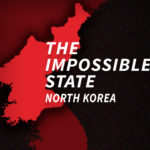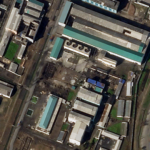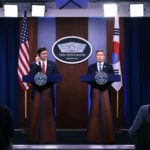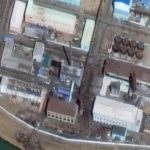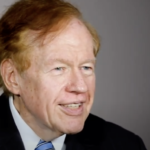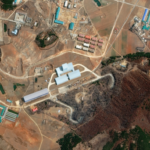June 19, 2020—
In this episode, Sue Mi Terry and Victor Cha discuss the DPRK's attack on the Inter-Korean Liaison Office, as well as revelations in John Bolton's book about President Trump's negotiations with North Korea. .. On July 16, 2024, the U.S. Department of Justice unsealed an indictment charging Sue Mi…
June 16, 2020, by Joseph S. Bermudez Jr. and Victor Cha—
The latest undertaking at the Hungnam Fertilizer Complex, one of North Korea’s oldest and largest chemical complexes, is the construction of a small “liquid nutrient fertilizer factory.” The construction and future operation of this new liquid nutrient fertilizer factory is a further manifestation of the continuing efforts under Kim Jong-un to increase agricultural production by expanding and diversifying domestic fertilizer production capabilities.
June 5, 2020, by Victor Cha and Ami Bera—
The unexplained periodic absences of North Korean leader Kim Jong Un over the past two months are troubling. Presumed health ailments for this obese smoker and drinker could leave his nuclear-armed dictatorship potentially leaderless overnight... A version of this op-ed appeared online on June 1, 2020 in The Washington Post.…
May 29, 2020, by Joseph S. Bermudez Jr. and Victor Cha—
The Pyongsan Uranium Concentrate Plant (38.318369 N, 126.432360 E) is located in Pyongsan-gun (평산군, Pyongsan County), Hwangbuk-do (황북, North Hwanghae Province), approximately 45 kilometers from the DMZ and 96 kilometers northwest of Seoul—the capital of South Korea. Since approximately 1990 it has occupied an critical role in the Democratic People’s Republic of Korea’s (North Korea) nuclear research and weapons programs as the sole known provider of uranium oxide (yellowcake) to these programs for fuel fabrication or enrichment.
May 18, 2020—
This bonus episode comes from CSIS’s Beyond Parallel Living History video series. We invite Robert King, former special envoy for North Korea human rights issues, to share his experience leading efforts to advance human rights and humanitarian conditions in North Korea. Ambassador King served as special envoy for North Korea human rights issues at the U.S. Department of State from 2009 – 2017.
May 18, 2020—
In this episode, Ambassador King shares how he became the first (and only) U.S. Special Envoy for North Korean human rights issues under the Obama administration. He recalls how he used his unique position to coordinate efforts with U.S. and foreign government agencies, as well as with non-governmental organizations, to advance North Korea’s human rights. In this interview, Ambassador King also recounts his experiences going to North Korea to intercede in U.S.-North Korean affairs and shares one of his most memorable experiences as special envoy.
May 14, 2020, by Sue Mi Terry—
After having gone missing for twenty days, Kim Jong-un reappeared on May 1, 2020 at a ribbon-cutting ceremony at a new fertilizer production facility in Sunchon. What fueled much speculation about Kim’s ill-health, and rumors of his death, for the past three weeks was the fact that he has missed several important public events, including his grandfather’s birthday commemoration on April 15th, which was highly unusual and unprecedented for Kim.
May 8, 2020—
In this episode, Victor Cha and Joseph Bermudez discuss the reappearance of Kim Jong Un and the breaking news surrounding satellite images CSIS released this week of a previously undisclosed North Korean missile facility... In this episode, Victor Cha and Joseph Bermudez discuss the reappearance of Kim Jong Un…
May 5, 2020, by Joseph S. Bermudez Jr.—
In a joint baseline analysis with Jane’s Intelligence Review, the Center for Strategic and International Studies surveys a previously undisclosed facility near Pyongyang International Airport in North Korea that is likely related to its expanding ballistic missile development program.
May 4, 2020, by Joseph S. Bermudez Jr. and Marie DuMond—
Widely considered as a midterm referendum on President Moon, the April electoral victory will breathe new life into his administration’s heretofore stalled diplomatic efforts with North Korea, a key pillar of which is inter-Korean railway cooperation. In the context of South Korea's renewed efforts in inter-Korean railway cooperation, Beyond Parallel reviews the railway connections of the Korean peninsula.
